False brome identification and control
About this weed
False brome is a regulated Class A noxious weed. due to its limited distribution in the state and potential for significant impact to state resources. This means eradication is required state-wide. False brome is also on the Washington quarantine list.
False brome is known as Brachypodium sylvaticum and it is in the grass family. Its native range is in Europe and some temperate regions of Asia and northern Africa.
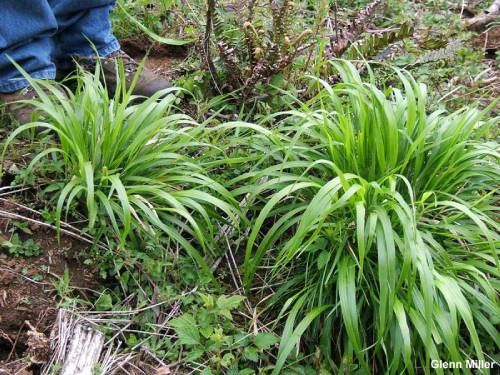
Why it's a problem
False brome is abundant in western Oregon and has begun to spread to Washington State. It thrives in a range of conditions including shaded woodlands, open prairies, and roadsides. Infestations can reduce biodiversity and forage by forming dense patches that crowd out native plants. False brome contains a fungal endophyte (Epichloe sylvatica) making it toxic for mammals to consume. In commercial forests, it creates good habitat for rodents that damage young trees and can suppress seedlings in oak woodlands. It also appears to be fire resistant, resprouting within two weeks of a burn, and may increase fire risks due to thatch buildup.
Plant description
False brome is a perennial (2+ year life cycle) bunch grass that generally stays green throughout the year. In the Pacific Northwest, false brome is abundant in oak woodlands and open grasslands but is found in many different areas. It grows well in shade or sun, moist or dry soils, and from low elevations up to 3500 feet. False brome blooms between June and September and reproduces only by seed.
Flower spikelet droop and have very short or no stalks. Leaf blades are flat and floppy and distinctly bright green. The leaf edge has a fringe of fine hairs, visible when held up to the sky. The leaf sheath (the base of the leaf that surrounds the stem or culm of the grass) is open and freely releases the stem when pulled back. Lower stems are thickly covered with fine, even hairs.
Young plants look somewhat like a many-legged spider spread out over the ground. Mature plants have a graceful, nodding form (both leaves and flowers). Mature stands form solid mats of plants 12 to 18 inches high.
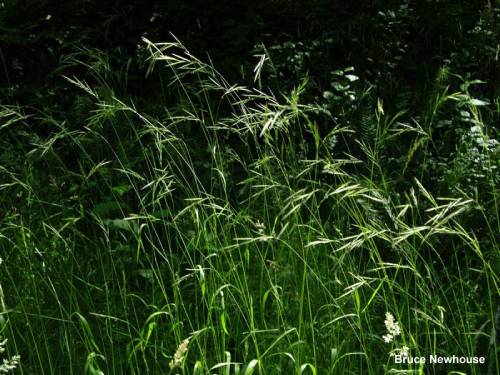

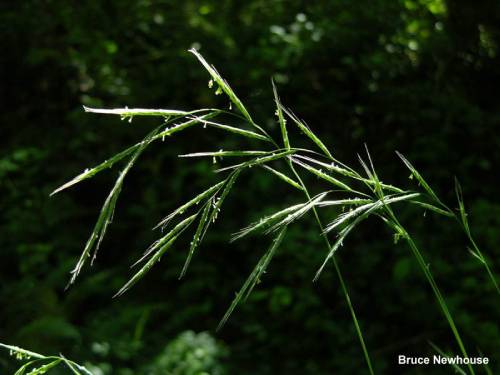
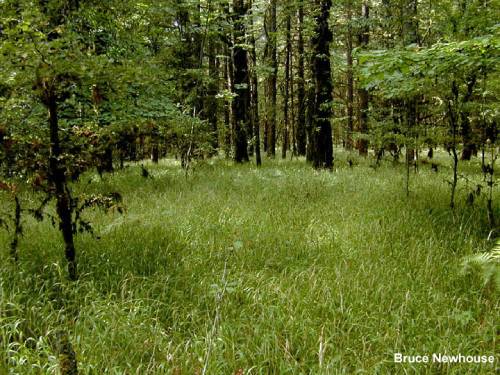
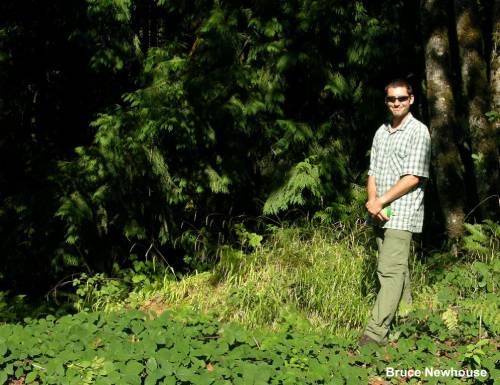
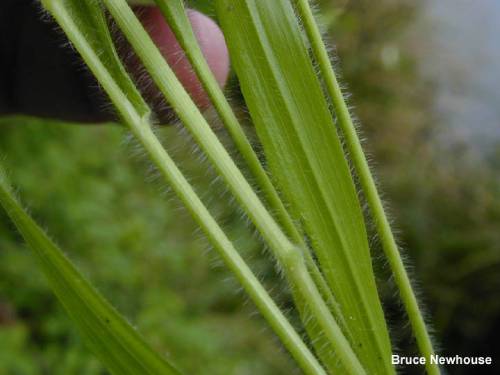
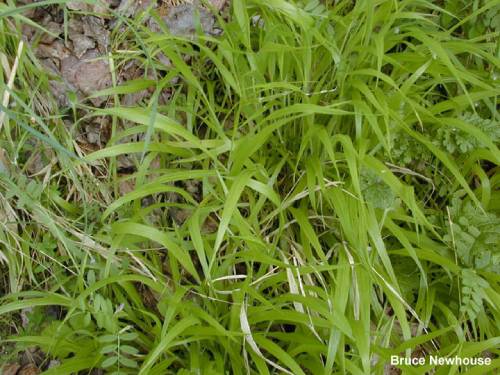

Be aware of look-alike plants
False brome can easily be confused with other grasses. Traits to help identify it include individual flower spikelet are not on long stalks (unlike true bromes), hairs along the edges of the wide, flat leaves, fine hairs covering the lower stems, and an open leaf sheath (meaning the base of the leaf freely releases the stem when the leaf blade is pulled back).
Please reach out to the noxious weed program to confirm identification before removing.
When in doubt, take photos and share them with us or report them on iNaturalist.
What to do if you find it
Property owners are required to control false brome on lands that they manage. Please notify us if you see false brome growing in King County. Our program staff can provide the property owner or appropriate public agency with site-specific advice on how best to remove it. We map all known locations of regulated noxious weeds to help us and others locate new infestations in time to control them.
It is difficult to identify this plant from more widespread weeds. We recommend contacting the noxious weed program for a positive identification before removing. There are very few records of false brome in our area, so if you do find it in King County, please report the location right away.
Control methods
We recommend using a combination of methods to control noxious weeds. In areas with few weeds, it is important to act quickly before they become harder to control. Make a long-term plan as it often takes several years to get rid of most weeds. Start in the least infested areas first and then move into more heavily infested areas.
Follow up is critical to successful eradication of false brome. Return in early summer each year for several seasons to find missed plants before they set seed. Recheck the area August-November after other grasses have started to turn brown.
Manual control
Isolated plants and small patches can be dug out before they produce seed.
Chemical control
Stay safe when using herbicide:
- Always read the label before use.
- Wear a long-sleeved shirt, long pants, shoes, and eye protection.
- Follow state and local regulations.
Treat plants mid-summer through fall with a non-selective herbicide such as glyphosate (e.g., Roundup). Or use a grass-specific herbicide to reduce impacts to broadleaf plants. To exhaust the seed bank and use less herbicide, a multi- year mowing regime can be used before starting herbicide treatment. Or combine mowing in early July followed by a fall treatment with glyphosate.
For specific chemical recommendations, please refer to the PNW Pest Management Handbook.
Disposal instructions
To avoid spreading seeds, bag them and dispose of them in the garbage, and compost the remainder of the plant.
Noxious Weed Disposal - Washington State Noxious Weed Control Board

 Translate
Translate